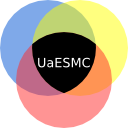SMC in the context of science communication and technology adoption
Feb 08
Feb 08
Science communication deals with the issues and questions of communicating technologies and scientific research to the wider public. In that sense, communicating a rather complex concept of SMC to non-experts without previous or little knowledge of SMC is a science communication problem in its essence. One of the first challenges of the project was to find ways to bring the knowledge of SMC to the selected interviewees in an easily comprehensible way. To overcome this challenge we used the visualization of SMC (by creating Capability Model) and semistructured interviews. The whole process has brought valuable knowledge and information, for example based on our experiences it can be argued that through interdisciplinary cooperation visual models can be brought on a level where they can be used as an efficient tool to communicate technologies to wide range of end-users and still reflect the technological capabilities on an adequate level.
Based on the interviews we have also tackled the questions that are connected to the technology adoption. Although the primary aim of the interviews was to find real-life applications to the technology, the interviewees also expressed their doubts and concerns giving valuable information on the barriers of technology adoption. Even when the technology is there and ready to use, there are still various barriers to overcome. Pille Pruulmann-Vengerveldt will present at the ICA’s annual conference the example of SMC in the context of technology adoption: arguing that new technologies to be implanted in the modern society need to take into account not only the technical parameters, but the user related, social and institutional context.
